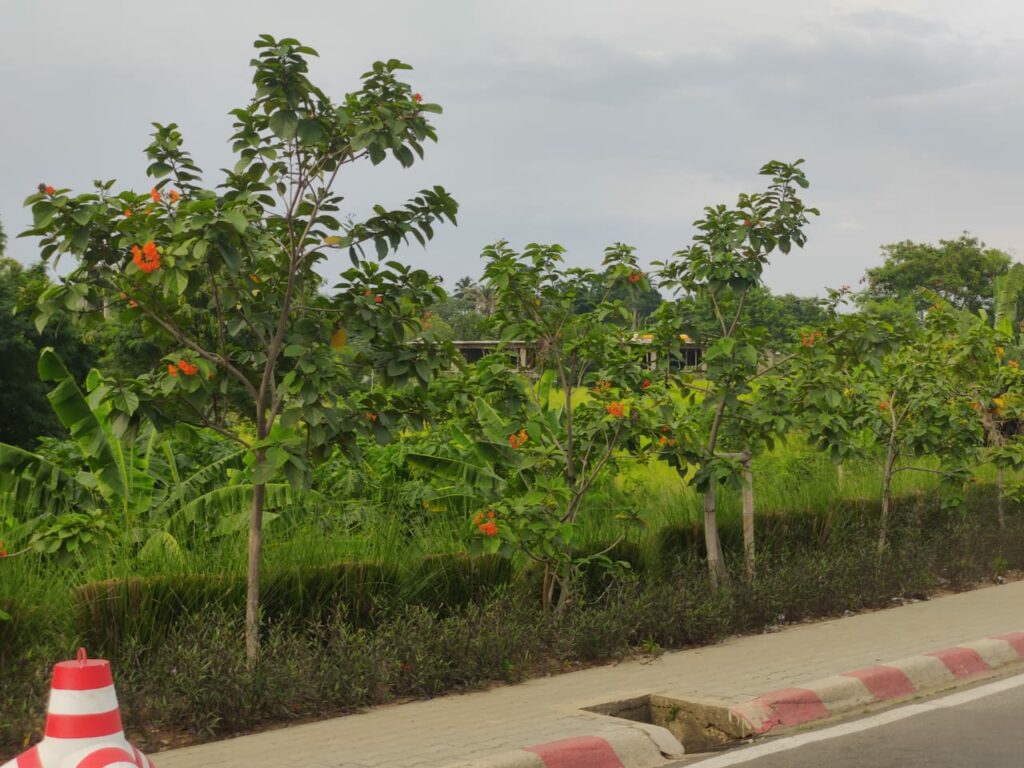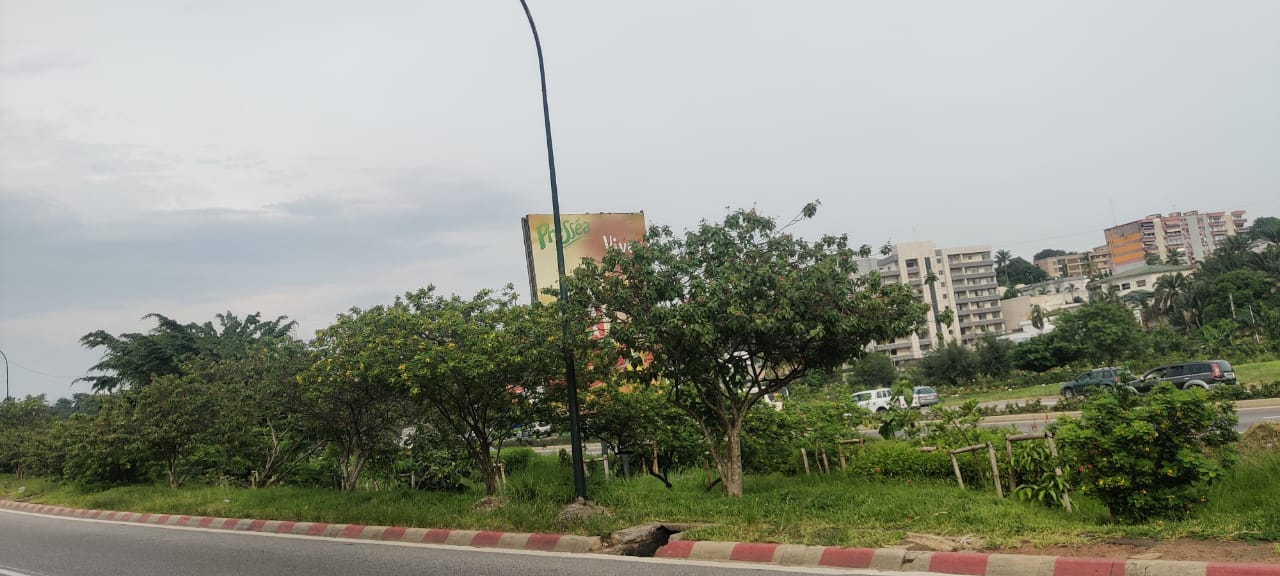

The ‘Nature-Based Solutions’ concept has grown in popularity in the recent past. This is evident through increased publications on this subject matter across scientific papers published in renown journals and policy documents, examples being global reports by Intergovernmental Panel on Climate Change [IPCC] (IPCC 2019a, 2019b), Intergovernmental Science Policy Platform on Biodiversity and Ecosystem Services [IPBES] (IPBES, 2018) among others. In addition, new programs with a core functionality on nature-based solutions have been launched. One such program is the DAAD’s African Climate and Environment Center- Future African Savannas (AFAS) and which focuses on the necessity for incorporating nature-based solutions in enhancing resilience in the vastness of the African savanna. More information about AFAS can be accessed here. Nature-based solutions are popular due to the multifold benefits they possess in supporting sustainable development and the wellness of humankind (Seddon et al., 2021), and in tackling the twin crisis (biodiversity loss and climate change) which the World Economic Forum (2022) predicts to inflict the most damage globally over the next decade. With regards to this, an in-depth lecture themed ‘Nature-Based Solutions’ was held on 1st September 2022 at the Center for Development Research (ZEF), in Bonn Germany during the AFAS Summer School Exchange Program. This exchange program brought together students and staff under the AFAS Program, drawn from the four centers of excellence collaborating in this program, namely, University of Bonn’s Center for Development Research (ZEF), University of Nairobi’s Institute for Climate Change and Adaptation (ICCA), University of Cologne’s Global South Studies Center (GSSC), and Université Félix Houphouët-Boigny’s African Center of Excellence for Climate Change, Biodiversity and Sustainable Agriculture. Prof Daniel Olago, the Research Director at the Institute for Climate Change and Adaptation at the University of Nairobi and one of the four AFAS Principal Investigators spearheaded this discussion. This article seeks to build upon the insights accrued from this session expounding on why nature-based solutions and how they can be adopted in a local and regional setup. We also share several examples of nature-based solutions.
The definitions of nature-based solutions by the International Union for Conservation of Nature (IUCN) and the one by European Commission (EC) have been widely adopted. The IUCN (2016) defines nature-based solutions as “Actions to protect, sustainably manage and restore natural or modified ecosystems and which addresses societal challenges such as climate change, natural disasters or food and water security, effectively and adaptively, while simultaneously providing human-well being and biodiversity benefits”. The European Commission (2015) on their part define nature-based solutions as “Actions inspired by, supported by or copied from nature, both using and enhancing existing solutions to challenges, as well as exploring more novel solutions”. These definitions birth the categorization of nature-based solution actions under: restoration, protection or management of semi-natural and natural ecosystems; managing sustainably the workings of lands and aquatic systems or establishment of novel ecosystems (Seddon et al. 2021). Nature-based solutions are based on the same philosophy that focuses on the ecosystem services they provide and the social problems they address. Organizations such as IUCN have developed global standards to promote the relevance, learning, development and effectiveness, sustainability and resilience of nature-based solutions. Among the standards developed is that governance processes of nature-based solutions should be based on transparency and inclusivity and that their management should be adaptive and evidence based. In addition, nature-based solutions should tackle challenges bedeviling societies effectively and yield in an overall net win for ecosystem integrity and biodiversity (IUCN, 2020). Nature-based solutions should also have well laid out indicators to ascertain their successes and targets. The indicators include carbon emissions, temperature variability, flood vulnerability, water quality, biodiversity, urban regeneration, air quality, social justice and cohesion, participatory planning and governance, human well-being, economic activity and green jobs, green space management, et cetera (Wendling et al., 2020). It’s also worthy to understand that the design and execution of nature-based solutions should be fully consented and approved by local communities and indigenous people in a manner that respects their ecological and cultural rights (Seddon et al, 2021).
Nature-based solutions have been and continue to be implemented in all landscapes or ecosystems such as the savanna, urban landscapes, lacustrine biomes, hilly landscapes, forested landscapes and agroecosystems, to address either a specific society challenge or enhance several other benefits. For instance, planting trees in an urban landscape can reduce the impact of urban heat waves, regulate air quality, minimize floods and enhance groundwater recharge. Protecting and (re)constructing wetlands enhances storm surges control in lacustrine and aquatic riparian zones, natural filtration to toxic chemicals and agricultural chemicals from water runoff and in rivers and streams, enhance carbon storage and provide habitat and refuge to diverse species of plants and animals. Along the coastal areas, mangrove forests provide immense carbon storage, control storm surges thus buffering coastal communities and infrastructure (such as roads and powerlines) from such climate induced events, support biodiversity among other ecosystem services. In a savanna landscape, protecting the existing savannas continues to enhance the underground carbon stocks thus contributing to climate mitigation. Planting the right tree species in a geographically and ecologically correct landscape is known to enhance atmospheric carbon sequestration and storage, air quality enhancement, soil erosion control and weathering enhancement. In addition, nature-based solutions are also known to enhance diversification of livelihoods and social cohesion, thus reducing the magnitude of environmental stressors (Woroniecki et al.,2022). These are just few examples demonstrating the vitality of nature-based solutions. However, despite their potential in climate change mitigation, nature-based solutions are not an alternative for phasing out fossil fuels which is known to cause climate change (Seddon et al.,2021). From this lively session in Bonn, it emerged that the existing definitions of nature-based solutions are still not clear in practical terms. In particular, it is sometimes difficult to clearly define what comprises a nature-based solution and what is not. In addition, there is a dangerous trend of ‘greenwashing’- a situation whereby individuals or companies can exaggerate their environmental qualifications.
As the students under the AFAS program diffuse into their various countries and localities to conduct field research, they carry along such virtues about nature-based solutions. World-class professionals and leading thinkers in this field have continuously devoted their time and effort in shaping the minds of the students during this academic phase. With these skills and knowledge, the students are determined to offer leadership in this nature-based solution sphere as practitioners, policymakers and as scientists. Their contribution will play a pivotal role to the achievement of resilient societies and ecosystems, not only within the confinement of the African savannas but also on the entire globe.
References
Cohen-Shacham, E., Walters, G., Janzen, C. and Maginnis, S. (eds.) (2016). Nature-based Solutions to address global societal challenges. Gland,
Switzerland: IUCN. xiii + 97pp http://dx.doi.org/10.2305/IUCN.CH.2016.13.en
European Commission and Directorate-General for Research and Innovation (2015). Towards an EU Research and Innovation policy agenda for Nature-Based Solutions & ReNaturing Cities. Brussels, Belgium: European Commission. doi: 10.2777/765301
IPBES (2018). The IPBES assessment report on land degradation and restoration. In L. Montanarella, R. Scholes, & A. Brainich (Eds.). Secretariat of the Intergovernmental Science-Policy Platform on Biodiversity and Ecosystem Services
IPCC (2019a). Summary for policymakers. In H.-O. Pörtner, D. C. Roberts, V. Masson-Delmotte, P. Zhai, M. Tignor, E. Poloczanska, K. Mintenbeck, A. Alegría, M. Nicolai, A. Okem, J. Petzold, B. Rama, & N. M. Weyer (Eds.), IPCC special report on the ocean and cryosphere in a changing climate. In press.
IPCC (2019b). Summary for policymakers. In P. R. Shukla, J. Skea, E. Calvo Buendia, V. Masson-Delmotte, H.-O. Pörtner, D. C. Roberts, P. Zhai, R. Slade, S. Connors, R. van Diemen, M. Ferrat, E. Haughey, S. Luz, S. Neogi, M. Pathak, J. Petzold, J. Portugal Pereira, P. Vyas, E. Huntley, K. Kissick, M. Belkacemi, & J. Malley (Eds.), Climate Change and Land: An IPCC special report on climate change, desertification, land degradation, sustainable land management, food security, and greenhouse gas fluxes in terrestrial ecosystems. In press.
IUCN (2020). Global Standard for Nature-based Solutions. A user-friendly framework for the verification, design and scaling up of NbS. First edition. Gland, Switzerland: IUCN. 978-2-8317-2058-6 https://doi.org/10.2305/IUCN.CH.2020.08.en
Seddon, N., Smith, A., Smith, P., Key, I., Chausson, A., Girardin, C., House, J., Srivastava, S., & Turner, B. (2021). Getting the message right on nature-based solutions to climate change. Global Change …, Query date: 2022-06-21 18:31:13. https://doi.org/10.1111/gcb.15513
Wendling, L., Rinta-Hiiro, V., Jermakka, J., & Fatima, Z. (2020). Performance and Impact Monitoring of Nature-Based Solutions.
World Economic Forum. (2022). pdf. https://www3.weforum.org/docs/WEF_The_Global_Risks_Report_2022.pdf
Woroniecki, S., Spiegelenberg, F. A., Chausson, A., Turner, B., Key, I., Md. Irfanullah, H.,Seddon, N. (2022). Contributions of nature-based solutions to reducing people’s vulnerabilities to climate change across the rural Global South. Climate and Development, 0(0), 1–18. https://doi.org/10.1080/17565529.2022.2129954
Information about the authors:
Joseph N. Ndiba is an AFAS fellow from the 1st master cohort based at the University of Nairobi in Kenya.
(juniorndiba[at]gmail.com/ ndibajoseph[at]students.uonbi.ac.ke)
Atud Yvette Cecile Bih is an AFAS fellow from the 1st master cohort based at the Université Félix Houphouët-Boigny in Côte d’Ivoire.
(cecilebih9[at]gmail.com )
Aka Ivan Atemnkeng is an AFAS fellow from the 1st master cohort based at the Université Félix Houphouët-Boigny in Côte d’Ivoire.
(ivanatem[at]yahoo.fr )